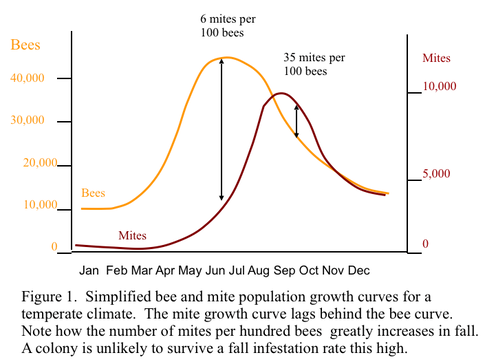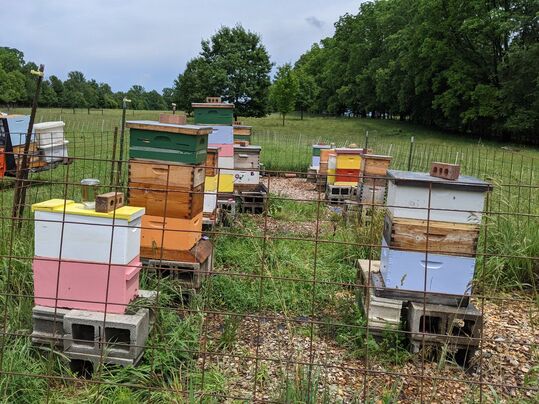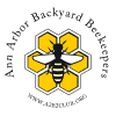 Copyright Randy Oliver, Scientific Beekeeping, 2006 Copyright Randy Oliver, Scientific Beekeeping, 2006 Accelerated Varroa mites breed exponentially. This means that an untreated, unmanaged hive with one mite in the spring will have thousands of mites by the fall. To make matters worse, the mite population of the hive is peaking just as the adult bee population of the hive is dwindling and just as special winter bees are being made to try to ensure the survival of the hive through the winter. The physical and physiological damage that the mites cause means that even if the hive technically survives to winter, the winter bees of the infected hive will likely be small and weaker than those of a healthy hive and the colony will not survive the winter. Booming One thing that sounds counterintuitive when it comes to Varroa mites is that big, booming colonies are more affected by mites than smaller, weaker colonies. This is because the mites breed inside the brood and a large hive with tons of brood will also therefore have a much higher mite load. Smaller colonies don’t have as much brood for the mites to “hide” in and breed in, and adult mites on adult bees may be groomed off by other bees. Unfortunately for beekeepers, it is often their largest, most “successful” hives that succumb to Varroa mites. Capped Varroa mites reproduce inside the capped brood cells of honey bees. The adult females can sense when a cell is about to be capped and jump into the cell and hide under the bee larva until the cell is capped. When the larva begins to pupate, the foundress mite feeds on the pupa and begins to lay her eggs. The first egg is always a male and the subsequent eggs are all females. When the eggs hatch the female mites will breed with the male mite and when the weakened adult bee emerges from the cell, the mated females (including the foundress) will escape and find adult bees to attach to. Varroa mites prefer to reproduce in drone brood cells because drones take longer to mature and therefore more of the mite eggs will have time to hatch and mate releasing more mature, adult mites on average. More Information: https://www.youtube.com/watch?v=k6y9FqNw6y8
0 Comments
Leave a Reply. |
AuthorJen Haeger is a new master beekeeper and board member of A2B2. Archives
August 2022
Categories
All
|


 RSS Feed
RSS Feed
